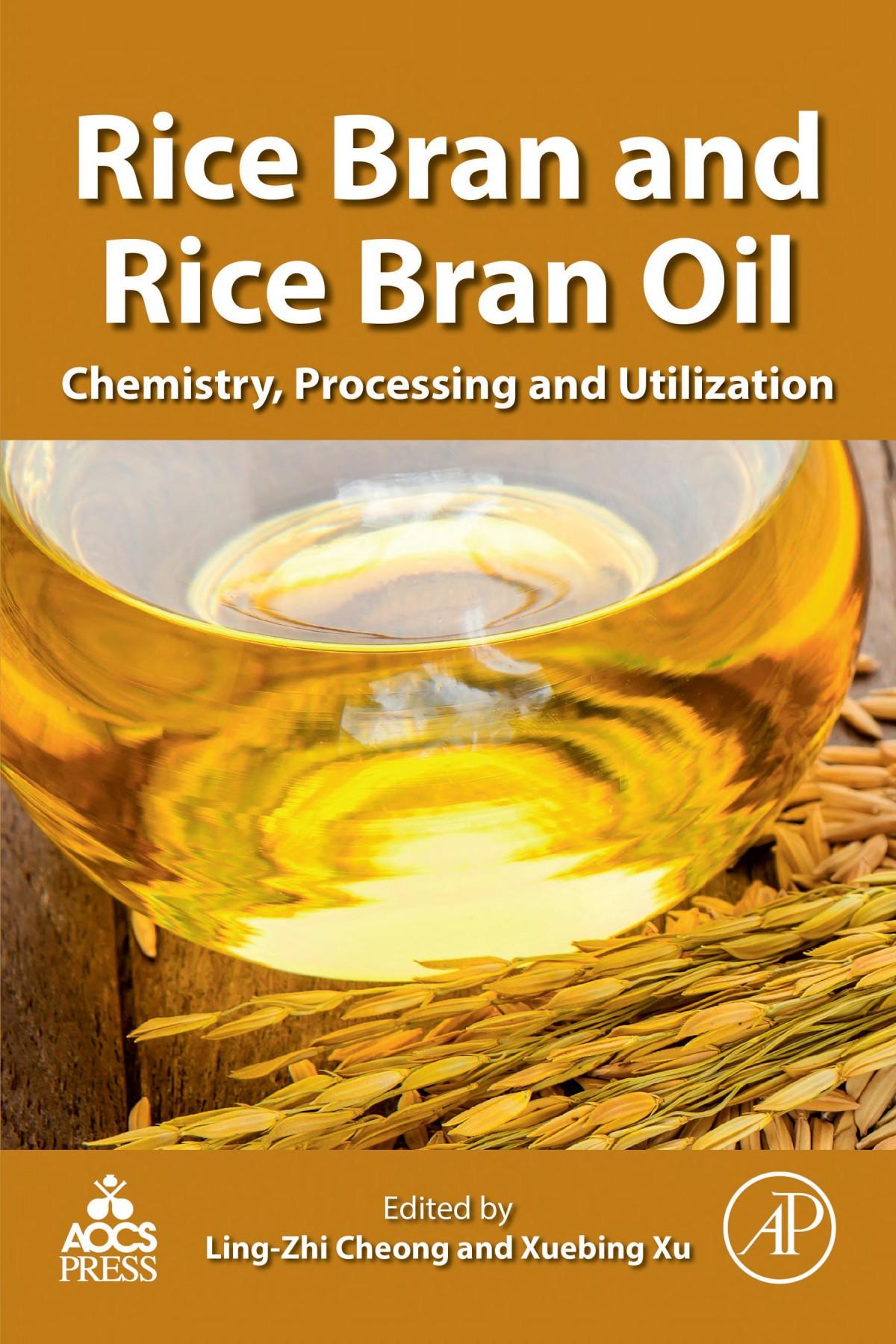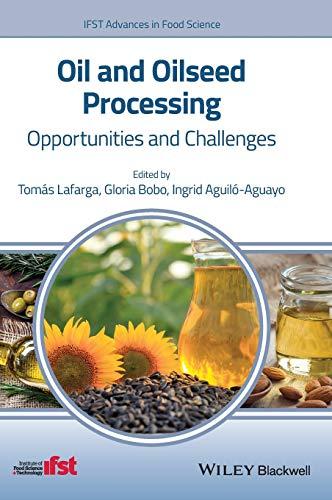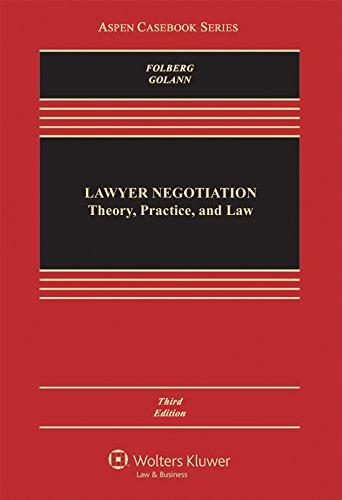RiceBranandRiceBranOil:Chemistry,Processing andUtilizationLing-ZhiCheong
https://ebookmass.com/product/rice-bran-and-rice-bran-oilchemistry-processing-and-utilization-ling-zhi-cheong/
Instant digital products (PDF, ePub, MOBI) ready for you
Download now and discover formats that fit your needs...
Rice Is Life Caryl Levine
https://ebookmass.com/product/rice-is-life-caryl-levine/
ebookmass.com
Peanuts : genetics, processing, and utilization 1st Edition Stalker
https://ebookmass.com/product/peanuts-genetics-processing-andutilization-1st-edition-stalker/
ebookmass.com
Oil and Oilseed Processing: Opportunities and Challenges
Tomás Lafarga
https://ebookmass.com/product/oil-and-oilseed-processingopportunities-and-challenges-tomas-lafarga/
ebookmass.com
From Socratic Insights To Platonic Wits: Your Complete Guide To Socratic Virtue And Platonic Wisdom For A Sharper, Smarter, And Strategic You Wisdom University
https://ebookmass.com/product/from-socratic-insights-to-platonic-witsyour-complete-guide-to-socratic-virtue-and-platonic-wisdom-for-asharper-smarter-and-strategic-you-wisdom-university/ ebookmass.com
McGraw Hill SAT Elite 2023 Christopher Black https://ebookmass.com/product/mcgraw-hill-sat-elite-2023-christopherblack/
ebookmass.com
You Were Always There : Notes and Recipes for Living a Life You Love Danielle Kartes
https://ebookmass.com/product/you-were-always-there-notes-and-recipesfor-living-a-life-you-love-danielle-kartes/
ebookmass.com
Lawyer Negotiation: Theory, Practice, and Law (Aspen Casebook Series) 3rd Edition – Ebook PDF Version
https://ebookmass.com/product/lawyer-negotiation-theory-practice-andlaw-aspen-casebook-series-3rd-edition-ebook-pdf-version/
ebookmass.com
Design of Hybrid Molecules for Drug Development Michael Decker
https://ebookmass.com/product/design-of-hybrid-molecules-for-drugdevelopment-michael-decker/
ebookmass.com
Governing Security After War Louis-Alexandre Berg
https://ebookmass.com/product/governing-security-after-war-louisalexandre-berg/
ebookmass.com
The Pureblood Princess: A Regency-Inspired Paranormal Vampire Romance Emberly Wyndham
https://ebookmass.com/product/the-pureblood-princess-a-regencyinspired-paranormal-vampire-romance-emberly-wyndham/
ebookmass.com
RICEBRANAND RICEBRANOIL RICEBRANAND RICEBRANOIL Chemistry,Processing andUtilization Editedby
LING-ZHICHEONG XUEBINGXU
AcademicPressandAOCSPress
AcademicPressisanimprintofElsevier 125LondonWall,LondonEC2Y5AS,UnitedKingdom 525BStreet,Suite1650,SanDiego,CA92101,UnitedStates 50HampshireStreet,5thFloor,Cambridge,MA02139,UnitedStates TheBoulevard,LangfordLane,Kidlington,OxfordOX51GB,UnitedKingdom
Copyright © 2019AOCSPress.PublishedbyElsevierInc.Allrightsreserved.
PublishedincooperationwithAmericanOilChemists’Society www.aocs.org Director,ContentDevelopment: JanetBrown
Nopartofthispublicationmaybereproducedortransmittedinanyformorbyanymeans, electronicormechanical,includingphotocopying,recording,oranyinformationstorageand retrievalsystem,withoutpermissioninwritingfromthepublisher.Detailsonhowtoseek permission,furtherinformationaboutthePublisher’spermissionspoliciesandourarrangements withorganizationssuchastheCopyrightClearanceCenterandtheCopyrightLicensingAgency, canbefoundatourwebsite: www.elsevier.com/permissions
Thisbookandtheindividualcontributionscontainedinitareprotectedundercopyrightbythe Publisher(otherthanasmaybenotedherein).
Notices Knowledgeandbestpracticeinthisfieldareconstantlychanging.Asnewresearchandexperience broadenourunderstanding,changesinresearchmethods,professionalpractices,ormedical treatmentmaybecomenecessary.
Practitionersandresearchersmustalwaysrelyontheirownexperienceandknowledgein evaluatingandusinganyinformation,methods,compounds,orexperimentsdescribedherein. Inusingsuchinformationormethodstheyshouldbemindfuloftheirownsafetyandthesafety ofothers,includingpartiesforwhomtheyhaveaprofessionalresponsibility.
Tothefullestextentofthelaw,neitherthePublishernortheauthors,contributors,oreditors, assumeanyliabilityforanyinjuryand/ordamagetopersonsorpropertyasamatterofproducts liability,negligenceorotherwise,orfromanyuseoroperationofanymethods,products, instructions,orideascontainedinthematerialherein.
LibraryofCongressCataloging-in-PublicationData
AcatalogrecordforthisbookisavailablefromtheLibraryofCongress
BritishLibraryCataloguing-in-PublicationData
AcataloguerecordforthisbookisavailablefromtheBritishLibrary
ISBN978-0-12-812828-2
ForinformationonallAcademicPresspublicationsvisit ourwebsiteat https://www.elsevier.com/books-and-journals
Publisher: AndreGerhardWolff
AcquisitionEditor: NancyMaragioglio
EditorialProjectManager: SusanIkeda
ProjectManager: NileshKumarShah
TypesetbySPiGlobal,India
Preface xi
1.ChemistryofRiceBranOil1
NurhanTurgutDunford
1. Introduction1
2. Oilcontentofricebran1
3. Fattyacidcompositionofricebranoil2
4. Freefattyacidcontentofricebranoilandvariousneutralization approaches3
5. Ricebranoiloxidation11
6. Otherchemicalreactionswithricebranoil14
7. Conclusions15 References15
2.NutritionalStudiesofRiceBranOil19
Oi-MingLai,J € orgJ.Jacoby,Wai-FunLeong,Wee-TingLai
1. Introduction19
2. Oryzanol29
3. Phytosterolsandsqualene37
4. Waxesandpolicosanol39
5. VitaminE41
6. Concludingremarks46 References46
3.ProcessingTechnologyofRiceBranOil55 PradoshPrasadChakrabarti,RamChandraReddyJala
1. Introduction55
2. Stabilizationofricebran57
3. Preferredprocessforrefiningofricebranoil59
4. Problemswithphysicalrefining62
5. Qualityrequirementofoilsmeantforphysicalrefining62
6. Pretreatment thekeyfactor63
7. Degummingofricebranoil64
8. Commonlyuseddegummingtechniques66
9. Bleachingofricebranoil71
10. Dewaxingofricebranoil78
11. Winterizationofricebranoil81
12. Deodorization/deacidificationofricebranoil82
13. Valueadditiontoricebranoilrefiningbyproducts87
14. Conclusion88 References89 FurtherReading94
4.BioprocessingTechnologyofRiceBranOil97 YuanrongJiang
1. Introduction97
2. Enzymaticstabilizingofricebran97
3. Enzymaticdegummingofricebranoil98
4. Enzymaticdeacidificationofricebranoil108
5. Enzymaticinteresterificationofricebranoil115
6. Chaptersummary119 References120 FurtherReading123
5.MicronutrientsinRiceBranOil125 RiantongSinganusong,UmarGarba
1. Introduction125
2. Gamma-oryzanol127
3. Tocopherols132
4. Tocotrienols136
5. Phytosterol139
6. Squalene144
7. Phospholipids148
8. Conclusion152 References152 FurtherReading158
6.ApplicationsofRiceBranOil159 YongWang
1. Introduction159
2. Foodapplications159
3. Functionalfoodapplications162
4. Pharmaceuticalapplications163
5. Cosmeticapplications165
6. Industrialapplications166
7. Conclusion166 References167
7.AnalyticalAspectsofRiceBranOil169 DongpingHe,LingyiLiu
1. Compositionalanalysis169
2. QualityAnalysis173
3. Challengesconcerningtheanalysisofricebranoil178 References179
8.DevelopmentofRiceBranFunctionalFoodandEvaluation ofItsHealthfulProperties183 Md.Alauddin,SadiaRahman,JahidulIslam,HitoshiShirakawa, MichioKomai,MdZakirHossenHowlader
1. Introduction183
2. Basiccompositionofricebran186
3. Fermentedricebranpreparationandfunctionalimprovement189
4. RiceBran-basedfunctionalfood,adrugalternative192
5. Fermentedricebranmodulatesmultifactorialmetabolicdisease andItssensor(glucose,insulin,andtranscriptionfactors)196
6. Conclusion199 References201 FurtherReading205
9.RiceHusk,RiceHuskAshandTheirApplications207 YanpingZou,TiankuiYang
1. Introduction207
2. Characterizationsofricehusk/ricehuskash208
3. Productionofsilicafromricehuskash218
4. Productionofsilicaaerogelfromricehuskash226
5. Applicationofricehusk/ricehuskashasbioadsorbent231
6. Conclusion241 References242
10.NutritionalIngredientsandActiveCompositions ofDefattedRiceBran247
XuhuiZhuang,TieYin,WeiHan,XiaolinZhang
1. Introduction247
2. Nutritionalingredientsandtheircontentsinricebran anddefattedricebran248
3. Starchinriceandricebran249
4. Nonstarchpolysaccharides254
5. RiceBranProteins259
6. Otheractivephytochemicalsindefattedricebran260
7. TheDevelopmentprospectofdefattedricebran263 References264
11.RiceBranProtein:Extraction,NutraceuticalProperties, andPotentialApplications271
YanZheng,NisiGao,JuanWu,BaoruYin
1. Introduction271
2. Nutraceuticalpropertiesandhealthbenefitsofricebranprotein272
3. Extractionofricebranprotein275
4. Ricebranproteinapplication283
5. Closingremarks288 References288
CONTRIBUTORS Md.Alauddin
DepartmentofNutritionandFoodTechnology,JessoreUniversityofScienceandTechnology,Jessore,Bangladesh
PradoshPrasadChakrabarti
CentreforLipidScienceandTechnology,CSIR-IndianInstituteofChemicalTechnology, Hyderabad,India
NurhanTurgutDunford
OklahomaStateUniversity,DepartmentofBiosystemsandAgriculturalEngineering, RobertM.KerrFood&AgriculturalProductsCenter,Stillwater,OK,UnitedStates
NisiGao
WilmarGlobalResearchandDevelopmentCenter,Shanghai,China
UmarGarba
DepartmentofAgro-Industry,FacultyofAgriculture,NaturalResourcesandEnvironment, NaresuanUniversity,Phitsanulok,Thailand;DepartmentofFoodScienceandTechnology, FacultyofAgriculture,BayeroUniversity,Kano,Nigeria
WeiHan
AcademyofStateAdministrationofGrain,Beijing,China
DongpingHe
WuhanPolytechnicUniversity,Wuhan,China
MdZakirHossenHowlader
DepartmentofBiochemistryandMolecularBiology,UniversityofDhaka,Dhaka, Bangladesh
JahidulIslam
LaboratoryofNutrition,DepartmentofScienceofFoodFunctionandHealth,Graduate SchoolofAgriculturalScience,TohokuUniversity,Sendai,Japan
JorgJ.Jacoby
WilmarBiotechnologyResearchandDevelopmentCenter,Shanghai,China
RamChandraReddyJala
CentreforLipidScienceandTechnology,CSIR-IndianInstituteofChemicalTechnology, Hyderabad,India
YuanrongJiang
WilmarBiotechnologyResearch&DevelopmentCenter,Shanghai,China
MichioKomai
LaboratoryofNutrition,DepartmentofScienceofFoodFunctionandHealth,Graduate SchoolofAgriculturalScience,TohokuUniversity,Sendai,Japan
Contributors
Oi-MingLai
DepartmentofBioprocessTechnology,FacultyofBiotechnologyandBiomolecular Sciences,UniversitiPutraMalaysia,Selangor,Malaysia
Wee-TingLai
InstituteofBioscience,UniversitiPutraMalaysia,Selangor,Malaysia
Wai-FunLeong
DepartmentofFoodScience,ThePennsylvaniaStateUniversity,CollegeofAgricultural Sciences,UniversityPark,PA,UnitedStates
LingyiLiu
WuhanPolytechnicUniversity,Wuhan,China
SadiaRahman
DepartmentofBiochemistryandMolecularBiology,UniversityofDhaka,Dhaka, Bangladesh
HitoshiShirakawa
LaboratoryofNutrition,DepartmentofScienceofFoodFunctionandHealth,Graduate SchoolofAgriculturalScience,TohokuUniversity,Sendai,Japan
RiantongSinganusong
CentreofExcellenceinFatsandOils;DepartmentofAgro-Industry,FacultyofAgriculture, NaturalResourcesandEnvironment,NaresuanUniversity,Phitsanulok,Thailand
YongWang
Wilmar(Shanghai)BiotechnologyResearch&DevelopmentCenterCo.,Ltd,Shanghai, China
JuanWu
WilmarGlobalResearchandDevelopmentCenter,Shanghai,China
TiankuiYang
WilmarGlobalResearchandDevelopmentCenter,Shanghai,China
TieYin
AcademyofStateAdministrationofGrain,Beijing,China
BaoruYin
WilmarGlobalResearchandDevelopmentCenter,Shanghai,China
XiaolinZhang
AcademyofStateAdministrationofGrain,Beijing,China
YanZheng
WilmarGlobalResearchandDevelopmentCenter,Shanghai,China
XuhuiZhuang
AcademyofStateAdministrationofGrain,Beijing,China
YanpingZou
WilmarGlobalResearchandDevelopmentCenter,Shanghai,China
PREFACE Ricebranisthebyproductofpaddyricemilling.Afterharvestingfromthe ricefields,paddyriceiscollectedforfurtherhandlingandtransportation. Paddyriceistheindividualricekernelsintheirnaturalandunprocessed state.Paddyricecontainstheprotectivehull(around20%ofthedrybase). Thehullshouldberemovedduringtheinitialmillingprocessing.Thehullis notusuallyedible,butitcanbeusedforboilerburning,wheretheashcan alsobeusedforsilicaoractivatedcarbonextraction.Thedehulledricekernelcanbeusedforconsumptionasbrownrice.Althoughbrownriceiscurrentlyrecommendedforhealthyeating,manyriceproducersaremoving ontofurtherprocessingtoproducewhiterice.Thebrownskinandrice germisremovedasricebran(around10%ofthedrypaddy).Thericebran mainlycontainsfiber,protein,oil,andresidualstarch.Ricebranismainly usedasfeedstufforasrawmaterialforoilextraction.Thewholericebrancan beconsideredforedibleusesifthequalityiscontrolled.Thispossibilityis currentlyunderexplorationintheindustryduetohighhealthvaluesin termsoffiber,protein,andoil-solublebioactivecompoundssuchasoryzanols,phytosterol,tocopherols,tocotrienols,etc.However,ricebrancontainsactivelipasethatcanhydrolyzetheoilinthebran.Thisleadsto poorqualityforuseinfoodandbringschallengesinricebranoilprocessing foredibleuses.Becausethericemillingindustryvariesfromcountryto country,andduetoculturalvariationforfoodpreferences,thereisahuge technicalchallengeingeneralforthebetteruseofricebranandricebranoil forfoodorhighervalue-addedapplications.Thisisanareafacinghightechnologyandoperationdifficulty,andthereisaneedforintensivetechnology andoperationinnovations.
Riceisoneoftheoldestcultivatedplantsintheworld,cultivatedmainly intropicalandsubtropicalregions.Itisimpossibletostatepreciselywhereit originated,butwildvarietiessuggestthatitmusthavecomefromAsia, Africa,ortheAmericas.RicewascultivatedinChinaandIndiaasfarback as700BCFromthesecountries,cultivationextendedtoJapan,Indonesia, andasfarasPersia.ItwasintroducedtoVirginia(UnitedStates)in1647and toBrazilin1750.Today,90%ofglobalproductionoriginatesinEastern Asia.InEurope,riceiscultivatedinItaly,Spain,andPortugal.Ricecan becultivatedbetween45° Northand40° South,butitrequiresatemperaturerangeof25–30°C.Highprecipitation(wetrice)orirrigation(watered rice)andsoilrichinhumusarealsocommonrequirements.
FromtheFoodandAgricultureOrganizationreportin2018,global paddyproductionisaround740–750millionmetrictons(MMT),whereas thenumberwasaround600MMTin2000.Onthecountrybase,theproductionineachcountry(productionamount,percentage)islistedasfollows: China(211MMT,28.4%),India(159MMT,21.4%),Indonesia(77MMT, 10.4%),Bangladesh(53MMT,7.1%),Vietnam(43MMT,5.8%),Myanmar (26MMT,3.5%),Thailand(25MMT,3.4%),Philippines(18MMT,2.4%), Brazil(11MMT,1.5%),Pakistan(10MMT,1.3%),UnitedStates(10 MMT,1.3%),Cambodia(10MMT,1.3%),Japan(8MMT,1.1%),and Others(82MMT,11.0%).Withricebranproductionof10%andoilbased onricebranat10%–16%,aconservativeestimateofricebranoilproduced globallyperyearshouldbemorethan7.5MMT.However,anonofficial estimationofcurrentproductionofricebranoilisnotmorethan2 MMT.Forexample,only10%–15%ofnaturalresourcesofricebranoil hasbeenexploredinChina.Alargevolumeofresourceshasnotyetbeen usedwellforfoodapplications.
Ontheotherhand,ricebranoilisoneofthemostnutritiousandfunctionaloilsinnature.Moredetailshavebeenelaboratedinchaptersofthis book.Furthermore,ricebranafteroilextractionhasalotofpotentialfor foodandotherapplicationsintermsoffibersandproteinsinmodernfood recommendationcriteria.Thisleavesvastpotentialitytoutilizericebranin betterways.
Ricebranandricebranoilisnotwellrecognizedbyconsumersand industry.BecausericeisprimarilygrowninAsia(morethan90%),mainstreamresearcheffortsinthewesternworldarenotwidelypursuedcomparedtomanyotheroil-bearingmaterials.EveninAsiancountries,the effortsarerelativelyweakandscattered.Technologyandapplicationsvary fromcountrytocountry.Regulationandstandardizedpracticearealso varied.Morepromotionandcommunicationarethereforehighlyneeded andatacriticalstage.
Withthisinformationinmind,theInternationalAssociationofRice BranOil(IARBO)wasinitiated.In2011,a1-daysymposiumonricebran oilwasheldinBeijing,whereProf.MiyazawafromJapanandDr.Prasad fromIndiawereinvitedtogivelectures,aswellastwonutritionistsfrom Thailand.Duringthesymposium,anideawasproposedtoformanorganizationforbetterpromotionoftheawarenessofthisoil.Althoughformingan internationalorganizationwasnothighintermsofmotivationandinspiration,anditwasnotconcludedasanactionpoint,manyparticipantsthought itwasagoodidea.Theconclusiontoactwasduetotheuncertaintyofforminganinternationalorganization.
In2012,wemadeatriptoJapanandparticipatedinalocaloilsandfats conferenceinIndiaforthepurposetomeetmorepeopleandtomaterialize plansforformingaricebranoilorganization.DuringtheIndianconference, wemetDr.MehtawhointroducedthesymposiuminThailandonricebran oil,whichwasorganizedbyDr.SinganusongfromNaresuanUniversity, Thailand,in2013.WeagreedtojointheconferenceatNaresuanUniversity andengagedallinterestedpartiessofaratthattime,wheretheorganization wasproposedandagreeduponbytheparticipatingparties.Thegeneral structurewasproposed,andtheinitialboardstructurewassettled.Following thefirstboardmeetinginlate2013inBangkok,theorganizationwascreated andshaped,includingapprovalofthebylaws.XuebingXuwasselectedas thefirstpresidentoftheIARBO.Thefirstannualmeetingwasproposedin Wuhan,China,in2014.Inthefollowingyears,theannualmeetingswere successfullyheldinMumbai(2015),Tokyo(2016),Bangkok(2017),and Hanoi(2018).IARBOhasdevelopedintoastableorganizationandismakingastrongimpactonthecommunity,inparticularintheassociatecountries.Moreandmoreparticipantsarejoiningtheannualconferences.There isbetterawarenessofricebranoilthroughtheeffortsoftheorganization.
ThisbookispartoftheIARBOeffort.Theeditorsappreciatethe IARBOboardforitsencouragementandinspiration.ThanksalsotoAOCS PressandtheElsevierpublicationteamformakingthisbookareality. ThanksparticularlygotoMs.JanetBrownfromAOCSforhereverlasting efforttopushforwardthebook’spublication.Withouttheirefforts,this bookwouldnothavecometrue.Lastbutnottheleast,weappreciatethe effortsfromalltheauthors.Theyprovidedbigsupportforthefinishing ofthisbook.
XuebingXu LingzhiCheong
ChemistryofRiceBranOil NurhanTurgutDunford
OklahomaStateUniversity,DepartmentofBiosystemsandAgriculturalEngineering,RobertM.KerrFood& AgriculturalProductsCenter,Stillwater,OK,UnitedStates
1.INTRODUCTION Rice(Oryzasativa L.)isamemberofthe Poaceae or Graminaceae familynative tosoutheastAsia.Ithasbeencultivatedasafoodcropforcenturies.Ricestill isaveryimportantstaplefoodforalargesegmentoftheworld’spopulation. Itiscommonlyconsumedasmilledorwhiterice,whichisproducedby removingthehullandbranlayersoftheroughricekernelduringthedehullingandmillingprocesses,respectively.Thebran,whichcomprises3%–8% ofthekernelandcontainspericarp,aleurone,andsubaleuronefractions,isa valuablebyproductofriceprocessingbecauseitcontainsahighconcentrationofhealthbeneficialbioactivecompounds,includingediblelipids.
Althoughitisnotwidelyusedasacookingoilworldwide,demandfor ricebranoil(RBO)asa“healthyoil”inspecialtyapplicationsandfunctional foodhassteadilyincreased(AliandDevarajan,2017).
Processingaspects,nutritionalproperties,andvariousapplicationsof RBOarediscussedintheotherchaptersofthisbook.ThischapterspecificallyfocusesonthechemicalcompositionandotherpropertiesofRBO.
2.OILCONTENTOFRICEBRAN Chemicalcompositionofbrandependsonricevariety,treatmentofthegrain priortomilling,millingtechnologyused,degreeofmilling,andthedownstreamprocessingofbran,thatis,fractionation.Typicaloilcontentinricebran variesbetween10%and23%.Genotypesignificantlyaffectstheoilcontentin bran(Goffmanetal.,2003).Oilcontentsofacollectionof204riceaccessions growninBeaumont,Texas,USAwereexamined.Ageneticallydiverse germplasmcollectionincludinghistoricalandpresent-dayU.S.cultivars,as wellasAsian,European,SouthAmerican,andAfricanricecultivars,were includedintheinvestigation(Goffmanetal.,2003).Oilcontentsofthegenotypesexaminedvariedfrom17%to27%.Over75%ofthelineshadoilcontentshigherthan22%(weight/weight[w/w]).Anotherstudyexamining
RiceBranandRiceBranOil
Copyright © 2019AOCSPress https://doi.org/10.1016/B978-0-12-812828-2.00001-9
PublishedbyElsevierInc. Allrightsreserved.
15ricevarietiesgrowninGhana(Amissahetal.,2003)revealedthatoilcontentinthesamples(13%–20%)wassimilartotheoilcontentreportedinother varieties(Goffmanetal.,2003).Glutinousriceisshowntocontainmoreoil thannonglutinousbrownrice(Taira,1984).
Thedegreeofmillinghasasignificanteffectontheoilcontentofbran (Saunders,1985).Forexample,0%–8%millingproducedbranwithabout 17%–18%oilcontent,whereasincreasedmillingfrom6%–9%to9%–10% decreasedtheoilcontentfrom16.5%to14.2%,respectively.Increasedmillingcontaminatesbranwithendosperm,whichislowinoilcontent.Ingeneral,branfromparboiledricecontainsaconsiderablyhigheramountofoil thanbranfromrawrice(Islametal.,2002; Raoetal.,1965).Accordingto Raoetal.(1965),oilcontentofparboiledricebranwashigher(28%–34%) thanthatinrawbranat5%degreeofmilling(24%–26%).Theresearchers speculatedthatoilinthealeuronelayermigratedtothebranduringparboiling andincreasedtheoilcontentinthebran.Also,branfromparboiledricecontainslessstarch,increasingtheoilfractioninthebran.
3.FATTYACIDCOMPOSITIONOFRICEBRANOIL Similartotheothergrainsandoilseeds,chemicalandfattyacidcompositions ofricevarysubstantiallywithvariety,agronomicpractices,andenvironmental conditions.Thestudieson24lowlandnonglutinousricevarietiesgrownon theHiroshimaAgriculturalExperimentStation,Japan,in1976and1977 foundthatvarietyhadasignificanteffectonstearic,oleic,andlinoleicacid contentsinbran(Tairaetal.,1979).Cropyearhadthemostsignificanteffect onpalmitoleicandlinolenicacidcontents.Asignificantpositivecorrelation betweenthedailymeantemperatureduringripeningandpalmitoleic,stearic, oleic,andarachidicacidcontentswasobserved.Thecorrelationsbetween myristic,palmitic,linoleic,andlinolenicacidcontentsanddailymeantemperatureswerenegativeandsignificantinyear1976butnotin1977.Thelatterresultswereexplainedbythelackofsignificanttemperaturevariation duringthe1977cropyear.Asignificantnegativecorrelationbetweenoleic andlinoleicandlinolenicacidcontentsandapositivecorrelationbetween linoleicandlinolenicacidcontentswereobservedinbothyears.Although theseresultsindicatetheeffectofenvironmentalconditionsandvarietyon fattyacidcomposition,itisimportanttonotethata2-yearstudyatonelocationmightnotbeenoughtoestablishreliablecorrelations.
Astudycarriedouton204ricegenotypesidentifiedtwogroups:one withlowpalmiticacid(<17.5%withameanof16%)andonewithpalmitic
acidintherangeof17.5%and22%(LugayandJuliano,1964).Thecultivar Indicahadahighersaturated/unsaturatedfattyacidratio(S/U)than Japonica.Anotherstudyconfirmedthelatterfindingsdemonstratingthat Indicacultivars,PetaandMalagkitSungsongPuti,hadloweriodinevalue (I.V.)thantheJaponicacultivar(Taira,1984).Ithasbeenalsoreportedthat glutinous-typericehadhighermyristic,palmitic,andstearicacidandlower oleicacidcontentthatthoseofnonglutinousrice. LugayandJuliano(1964) examinedfattyacidcompositionofRBOprocessedindifferentcountries andfoundsignificantdifferences.ThereporteddifferencesintheI.V.of RBOmaybeduetothecropvarietyprocessed,environmentalconditions, andthetypeanddegreeofprocessing.Forexample,adewaxingprocess removesmoresaturatedfattyacidsthanunsaturatedones.
Ingeneral,saturatedfattyacidcompositionofRBOisquitehigh, between19%and35%(Firestone,1999).Palmiticacidisthemajorsaturated fattyacid.UnsaturatedfattyacidscomprisemostofthefattyacidsinRBO (55%–87%).Monounsaturatedfattyacid,oleicacid,isthemostabundant unsaturatedfattyacid(38%–48%)followedbypolyunsaturatedfattyacid linoleicacid(16%–36%).Manyotherstudiesreportedsimilarfattyacid compositionforRBO(RukminiandRaghuram,1991; Lathaand Nasirullah,2014).
Abouthalfofthetriacylglycerides(TAG)inRBOwastriunsaturated, meaningthatallthreefattyacidsontheglycerolbackbonewereunsaturated (see Table1)( Jinetal.,2016).Only7%oftheTAGwasmonounsaturated.PLO(palmitic-linoleic-oleic),OLL(oleic-linoleic-linoleic),and OOL(oleic-oleic-linoleic)werethemostabundantspecies,at19.3%, 16.4%,and18.0%,respectively.
About50%ofthefattyacidsonthesn-2positionontheglycerolbackboneinRBOTAGwaslinoleicacid(Table2)(Bergeretal.,2005).Oleic acidonthesn-2positioncomprisedabout45%ofthefattyacids.Themost abundantfattyacidonthesn-1,3positionwasoleicacid(42.5%),followed bylinoleic(29.6%)andpalmiticacid(21.5%).
4.FREEFATTYACIDCONTENTOFRICEBRANOILAND VARIOUSNEUTRALIZATIONAPPROACHES
4.1FreeFattyAcidContent
Theshelflifeofbrownriceisquiteshort,about3–6months.Thisispartly duetotherapidhydrolysisoflipidsinricegrain.Lipasesnaturallypresentin thegrainhydrolyzeTAGgeneratingfreefattyacids(FFA),whicharenot
Table1 TriacylglyceridecompositionofRBO Triacylglyceridea Amount(%)
a Tri-UTAG,triunsaturatedtriacylglycerols;Di-UTAG,diunsaturatedtriacylglycerols;Mono-UTAG, monounsaturatedtriacylglycerols;M,myristic;P,palmitic;S,stearic;O,oleic;L,linoleic;Ln,linolenic. AlthoughTAGswithlowlevelssuchasOLLn,LLM,OOLn,PLnO,SLL,andSOOarenotlistedinthe table,theyareincludedinMono-UTAG,Di-UTAG,andTri-UTAG.
AdaptedfromJin,J.,Xie,D.,Chen,H.,Wang,X.,Jin,Q.,Wang,X.,2016.ProductionofRicebranoil withlightcolorandhighoryzanolcontentbymulti-stagemoleculardistillation.J.Am.OilChem.Soc. 93(1),145–153.
Table2 RegiospecificdistributionoffattyacidsontheglycerolbackboneofTAG
AdaptedfromBerger,A.,Rein,D.,Schafer,A.,Monnard,I.,Gremaud,G.,Lambelet,P.,etal.,2005. Similarcholesterol—loweringpropertiesofricebranoil,withvaried γ-oryzanol,inmildly hypercholesterolemicmen.Eur.J.Nutr.44(3),163–173.
desirableinedibleoils.FFAacceleratesoilqualitydegradationbyproducing off-flavors,off-odors,andotheroxidationproducts.Riceneedstobestabilizedtominimizelipolytichydrolysisbyinactivatingendogenouslipases priortomillingandstorage.
FFAcontentofRBOvariessignificantlydependingonthequalityof branusedforoilextraction.Ingeneral,FFAcontentofRBOisbetween 2%and5%.However,extremelyhighFFAcontentsrangingfrom15% to40%havealsobeenreported(BhattacharyyaandBhattacharyya,1989).
VariousresearchgroupsexaminedtheeffectsofdifferentricestabilizationtechniquesonFFAformationduringstorage(Kimetal.,2014; Ramezanzadehetal.,1999).TotalFFAcontentoftheoilinthebranincreased from2.5%to54.9%duringstorageat25°Cundervacuumfor16weeks (Ramezanzadehetal.,1999).Whenbranwasstoredatalowertemperature (4–5°C),FFAformationsloweddownto25.4%.Microwavetreatmentof thebranpriortostorageat25°CundervacuumfurtherreducedtheFFA formationto6.9%.Storageofthemicrowave-treatedbranat4–5°Cfor 16weeksretainedtheinitialFFAcontentat2.5%.Astudycarriedoutby ChampagneandHron(1992) demonstratedthatFFAcontentinbrownrice treatedwithethanolvapordidnotincreasesignificantlyduringstorageat 36°Cfor6months.Ethanoldenaturesanddeactivatesendogenousenzymes includinglipasesandreduceslipolytichydrolysesreactionsthatproduce FFA.However,ethanol-treatedricekernelsweremoresusceptibletooxidativedeteriorationduetothedisruptedcaryopsiscoatandkernelfissuring, whichincreasedtheporosityofthekernelmakingitpronetooxidation. Furthermore,heattreatmentdegradesantioxidants,thatis,tocopherols,naturallypresentinthekernel.
Severalresearchgroupsdemonstratedtheefficacyofinfraredheatingfor stabilizingricebranandreducingFFAformationduringstorage(Wang etal.,2017a; Yılmaz,2016; Dingetal.,2015).Otherstabilizationtechniques suchaschemicaltreatmentbysprayinghydrochloricacidoverricebranto reducepH(PrabhakarandVenkatesh,1986),ohmicheating(Lakkakula etal.,2004),andextrusion(Sayreetal.,1985)havebeenshowntobequite effectiveinextendingthebranqualityduringstorage.However,mostofthe latteradvancedstabilizationtechniquesarestillintheresearchphase.Further researchanddevelopmentworkisneededtodemonstrateefficacyatthe commercialscaleandeconomicviabilityfortheindustrytoadoptthese techniques.
4.2RiceBranOilNeutralizationTechniques FFAcontentofoilsisreportedaseitheraweightpercentageofoiloracid value,whichisdefinedastheweightofKOH(mg)neededtoneutralize theorganicacidspresentin1gofoil.Ingeneral,goodqualityoilseedsproduce oilwith <1%FFAincrudeoil.Thevoluntaryindustrystandardforrefined ediblequalityoilis0.05%FFAorless.Usually,refinededibleoilssoldinthe U.S.containabout0.01%FFA.TheIndianStandardspecificationforrefined RBOallowsamaximumacidvalueof0.5(0.25%FFA)(Krishnaetal.,2006).
CrudeRBOgoesthroughaseriesofrefiningprocessestoremoveundesirablecompounds,meetedibleoilqualitystandards,andextenditsshelflife. Usually,neutralization,alsoreferredtoasrefiningordeacidification,isthe secondstepafterdegumminginconventionalcrudeedibleoilrefiningoperations.However,crudeRBOcontainsarelativelyhighamountofwax, 1%–2%ofoil,whichinterfereswiththerefiningprocess.Hence,adewaxing stepisincludedintheRBOrefiningprocessprecedingdegumming,which removesphospholipids(alsoreferredtoasgums)(Orthoefer,1996a).NeutralizationprocesseitherconvertsFFAtoneutralacylglycerides,which remainintheoil,orremovesthemfromtheoil.
Theconventionalneutralizationtechnique,alkalirefining,utilizescausticsodatoconvertFFAtosodiumorpotassiumsaltsoffattyacids(soap stock).Then,soapstockisremovedfromtheoilbycentrifugation (BhattacharyyaandBhattacharyya,1987).Althoughthelattermethodis quiteefficientinneutralizingoil,highneutraloil(TAG)lossandlarge amountofwaterusagearethemajordisadvantagesofalkalirefining.
RBOwithveryhighFFAcontentisusuallydeacidifiedbymiscellarefiningusingalcohols,thatis,ethanol,isopropanol,oramixtureoftwoalcohols, afterhexaneextractionandpriortoremovalofthesolventfromoil(desolventizing)(Bhattacharyyaetal.,1986; Rodriguesetal.,2014; Oliveiraetal., 2012).Neutralizationbysolventextraction,alsoreferredtoasliquid-liquid extraction,isbasedonthedifferenceinthesolubilityofFFAandTAGina suitablesolvent.Theadvantagesoftheliquid-liquidextractionmethod includemildprocesstemperatureandpressure,andminimalTAGlossduringneutralization(Rodriguesetal.,2006).
NeutralizationofRBOusingporousandnonporousmembraneswithor withoutsolventadditionhasbeenexamined(Deetal.,1998; Kaleetal., 1999; ManjulaandSubramanian,2006).ThemolecularweightsofFFA andTAGare <300Daandhigherthan800Da,respectively.Intheory,a hydrophobicmembranewithmolecularweightcutofabout300–500Da couldeffectivelyseparateFFAfromTAG.However,irregularitiesinpore sizeofthecommercialmembranesandverysmalldifferencesinmolecular weightsofFFAandTAGleadtoinefficientseparationusingnanofiltration membranesalone.Combinationofconventionalrefiningwithmembrane processingappearstobemoreeffectiveinreducingFFAinRBO.Forexample,acombinationofsolventextractionofFFAwithethanolfollowedby membraneseparationisshowntobetechnicallyfeasible(Deetal.,1998). Yet,introductionofanothersolventintheprocessandneedforsolventresistantmembranesmakethismethodlessattractivethandirectmembrane
processingofoil,whichhasitsowndisadvantagessuchasinefficientremoval ofFFAfromTAGandlowflux.Theneutralizationtestsrunwithnonporousmembraneswerenotverysuccessfulduetoeitherlowselectivity,poor flux,orboth(ManjulaandSubramanian,2006).Atitscurrentstatus,membranerefiningsystemsdonotappeartobeviablecommercialoptionsfor replacingtheexistingconventionaltechnology.
PhysicalrefiningorneutralizationreferstoremovalofFFAundervacuumandhightemperature.Duringtheprocess,unsaponifiableandodor compoundsarealsoremoved(Cvengros,1995).Thisprocess,whichwill bediscussedindetailinanotherchapterinthisbook,issuitableforhigh FFAcontentoilssuchasRBO.Physicalneutralizationeliminatessoapstock production,reducesneutraloillosses,andproducesahighpurityFFA byproductthatcanbeusedasfeedstockbyoleochemicalindustry.Physical neutralizationutilizeslesswater,steam,andpower,andrequireslowercapitalinvestmentthantheconventionalrefining.Theimpactofoilrefiningon theenvironmentisalsoreduced.However,efficiencyofphysicalFFA removaldependsonthequalityofincomingoil.Anycompoundthatmight gothroughadversechangesandreactionsathightemperature,thatis,metals orchlorophyll,needstoberemovedpriortophysicalneutralizationtoproduceahighqualityfinalproduct. Kimetal.(1985) reportedthatsteamrefiningwaslesseffectivethancausticrefininginremovingFFAfromRBO. Moleculardistillationinawipedfilmshort-pathevaporator(Martins etal.,2006)producesahigherqualityproductthansteam-strippedoil, butthisprocessmightbecostinhibitiveforcommodityoils.
RefiningofRBOresultsinoillossesof20%–50%(w/woftotaloil)duringconventionaloilprocessing(Orthoefer,1996a,b; Gingras,2000).Furthermore,conventionalrefiningprocessessignificantlyreduce(about50%) healthbeneficialbioactivecomponentsinrefinedoil(Orthoefer,1996a). High-pressureextractionandfractionationtechnologyemployingsupercriticalcarbondioxide(SC-CO2)isanalternativetechniqueforvegetable oilrefining.SC-CO2 extractionandfractionationofRBOathighpressures andlowtemperatureresultinaproductwithhighTAGandlowFFA, waxes,andunsponifiablecontentsduetothelowerselectivityof SC-CO2 forthelattercompounds(Zhaoetal.,1987).
DunfordandKingdevelopedapatentedRBOfractionationprocessthat significantlyreducesFFAcontentandincreasesoryzanolandotherphytosterolestercontentsintheTAG-richphase(DunfordandKing,2004).Lowpressureandhigh-temperatureconditionswerefoundtobefavorablefor minimizingTAGandphytosterollossesduringFFAremovalfromcrude
RBO(DunfordandKing,2000).Oilfractionswith1%FFA,about95% TAG,and0.35%freesterolwith1.8%oryzanolcontentcouldbeobtained withthedescribedSC-CO2 fractionationtechnique,whichutilizedapilot scalepackedfractionationcolumn.Alaterstudybythesameresearchers (Dunfordetal.,2002)usedasimilarapproachtotheonedescribedearlier (DunfordandKing,2000)butimprovedtheFFAremovalandphytosterol enrichmentintheTAGphaseusingatwo-stepprocessingscheme.Initially, FFAwereremovedinthefirstcolumn,andthenalowacidityphytosterolenrichedoilfractionwasobtainedwithasecondstepfractionationprocess (Dunfordetal.,2002).Lowpressure(138bar)andhightemperature(80°C) effectivelyremovedFFAfromcrudeRBOwithoutsignificantoryzanolloss intheTAG-richphase.Oryzanolcontentoftheraffinatefraction,lowin FFAandhighinTAG,wasthreetimeshigherthanthatoftheoriginal RBO.Phytosterolfattyacidestercontentoftheraffinatefractionwasalso increasedduringthedeacidificationprocess;however,enrichmentofthese moietieswasnotashighasthatfoundfororyzanol.
BiologicalneutralizationofhighFFAcontentoilscanbeachievedusing eitherintactmicroorganismsorisolatedenzymes.Moredetaileddiscussion onbiologicalneutralizationcanbefoundinanotherchapterinthisbook. Cho,Kwon,andYoon(Choetal.,1990)haveshownthat Pseudomonas strain(BG1)assimilateslong-chainfattyacidswithoutsecretingextracellular lipases.Unfortunately,thismicroorganismdoesnotdigestshort-chainfatty acids,having <12carbonatomsandlinoleicacid.Thelatterfattyacids sometimesinhibitcellgrowth.Althoughbutyric,valeric,caproic,caprylic, andcapricacidshavehighersolubilityinwaterthanoleicacid,theywerenot utilized.Thiscouldbeduetothetoxicityofshort-chainfattyacidstomicroorganisms.Usingintactmicroorganismsratherthanpurifiedenzymesmay improvetheeconomicviabilityoftheprocess.However,BG1hasnot yetbeentestedwithvegetableoils.Furthermore,usingintactcellslimits masstransfer,adverselyaffectingreactionkinetics.Hence,thisprocessisstill intheproof-of-conceptphase.
NeutraloilyieldissignificantlyreducedwhenconventionalRBOneutralizationtechniquesareusedforrefining,adverselyaffectingtheeconomic viabilityoftherefinedRBOproduction.Therehavebeenattemptsto improvetheRBOrefiningprocesstoachievehigherrefinedoilyieldby reesterifiyingFFA.EsterificationofFFAwithglycerolordi-ormonoacylglyceridestoproduceneutralacylglycerideseliminatestheneedtoremove FFAfromoilandminimizesoilloss(BhattacharyyaandBhattacharyya, 1989; BhosleandSubramanian,2005).Esterificationreactionscanbecarried
outwithorwithoutachemicalcatalystorusingenzymes.Thestudieson chemicalesterificationofFFAathightemperatures,200–270°C,goback tothe1850s(BhosleandSubramanian,2005).Therehavebeenafewrecent applicationsofhightemperatureesterificationtoRBO.Forexample,chemicalesterificationofdegummedRBOFFAat200°Cwith70%excessglycerolfor4hinthepresenceof0.2%catalyst(SnCl2)reducedtheacidvalue from24.3%to3.0%(SinghandSingh,2009).Anotherstudy(Bhattacharyya andBhattacharyya,1987)examinedcatalytic(stannouschlorideand p-toluenesulphonicacid)esterificationofFFAincrudeRBOwithglycerol inanitrogenatmosphere.Theeffectofcatalystontheesterificationreaction ratewassignificantonlyduringtheinitial2h.EsterificationofRBOcontaining15%–30%FFAwithglycerolundervacuuminthepresenceof p-toluenesulphonicacidfollowedbydegumminganddewaxingresulted inaproductwith1.6%–4.0%FFA. DeandBhattacharyya(1999) demonstratedthathigh-temperature(210°C)andlow-pressure(1.3kPa)esterificationofdegummed,dewaxed,andbleachedRBOcontaining9.5%–35.0% FFAwithmonoacylglyceridesat210°Cand1.3kPareducedtheFFAcontentto0.5%–3.5%.Itappearsthatchemicalesterificationmethodshavenot beenadoptedbythevegetableoilrefiningindustry,probablyduetothevery highreactiontemperaturesrequired.
Biorefiningofedibleoilscouldbemoreacceptabletoconsumerswaryof residualchemicalsintheirfoodandchemicalprocessingingeneral.Enzymes isolatedfrommicroorganismshavebeenusedforesterificationofFFAto glycerol,phytosterols,andmono-anddiglycerides(Bhattacharyyaand Bhattacharyya,1989; Lietal.,2018,2017,2016).Enzymaticneutralization ofdegummedanddewaxedhighacid,30%FFA,RBOwascarriedoutusing Mucormiehei lipase(Lipozyme™)inthepresenceofglycerolinthereaction mixture(Saunders,1985).FFAcontentoftheRBOcouldbereducedfrom 30%to3.6%in10hunderthefollowingconditions:theoreticalamountof glycerol,10%enzyme,and10%waterbasedontheoilweight,at10mmHg and70°C.Asexpected,lower(50°C)andhigher(80°C)reactiontemperaturesthantheoptimumtemperaturefor M.miehei lipase(70°C)lowered esterificationrate,consequently,reducingFFAneutralizationefficiency. Additionof30%excessglyceroloverthetheoreticalamountinthereaction mediumdidnotimproveesterificationefficiency.
AmultistepenzymaticesterificationmethodreducedtheFFAcontentof RBOoilfrom45%to4%(Lakshmananetal.,1992).LipozymeIM 20(M.miehei immobilizedonanionexchangeresin)wasusedasacatalyst at70°Cand10mmHg.Thereactiontimewas4h.Firstphaseofthereaction
reducedtheFFAcontentto15.7%.Freshenzymeandglyceroladditionsto thereactionmixtureinmultiplestepsfollowingthefirstphasefurther reducedtheFFAcontentto4%afterthethirdaddition.
Severalanimalandhumanclinicalstudiesindicatedthatdiacylglycerol (DAG)consumptiondecreasespostprandialTAGlevelsinserumand suppressesaccumulationofTAGinbodyfatandliver(Hibietal.,2011; Kawashimaetal.,2008).Hence,inanefforttoproduceDAG-enriched RBOwhileneutralizingit,degummed,dewaxed,andbleachedRBOwith 20.2%FFAand0.3%DAGcontentwasreactedwithMAGusinglipaseRM IMasabiocatalyst(Songetal.,2012).Theoptimumreactionconditions weredeterminedas56°C,4.77%enzymeloading,5.75hreactiontime, andMAG/RBOratioof0.25.Afinalproductwith0.28%FFAand 27.98%DAGcontentwasobtainedunderthelatterreactionconditions. Theenzymecouldbeusedninetimeswith90%ofitsoriginalcatalyticactivitystillremaining.
PresenceofactivelipaseinricebrannotonlyleadstoFFAformationbut alsogeneratesasignificantamountofpartialglycerides,monoacylglycerol (MAG),andDAG.Thelattercompoundsadverselyaffectdownstream refining,potentiallyleadingtotheformationofglycidylestersduring deodorization(VanHoedetal.,2010; Craftetal.,2012).Glycidylesters arereportedtobecarcinogenicandgenotoxic(Craftetal.,2012). ArelativelynewstudyexaminedproductionofMAG-andDAG-free RBO(Lietal.,2017).First,MAGandDAGinRBOwerehydrolyzed toFFAusingimmobilizedlipase Malasseziaglobose,SMG1-F278N,followed byesterificationofFFAusingthesameenzyme.Hydrolysisprocesswascarriedoutat30°CandpH6.Finalproductafterhydrolysiscontained66.3% TAG,33.3%FFA,and0.1%DAG.Deacidifactionreactioncarriedoutat substrate(ethanol)toFFAmolarratioof1.5:1andenzymeloadingof 40Unit/g(basedonoilweight)at30°Cresultedin99.8%deacidification efficiency.
Freephytosterolanditsestershavebeenreportedtopossessmanyhealth benefitsincludingcholesterol-lowering(Miettinenetal.,1996),antiinflammatory,antiatherogenic,andanticancereffects(Rudkowska,2010; Brufau etal.,2008; AwadandFink,2000; Bouic,2001).Wangetal.(Wangetal., 2016)reportedaprocessthatdescribesenzymaticneutralizationofhighacid RBObyesterifyingFFAtophytosterols.LipozymeRMIM,whichisa sn-1,3-specificlipase,wasusedfortheesterificationreaction.Thereaction ofRBO(10g)andphytosterol(2.34g)inhexaneat70°Cfor60hreduced theFFAcontentfrom15.8%to1.2%.Phytosterolestercontentintheoil
increasedfrom0%to29.3%,andmostofthevitaminEnaturallypresentin RBOwasretainedduringtheenzymaticneutralizationprocess.
Fattyacidethanolamidesarelipid-signalingmoleculesthatareubiquitousinnature,foundinanimalandplantcells.Theyhavebeenreported tohaveantiinflammatory,anticancer,antiproliferative,andneuroprotective functions(Kilaruetal.,2007; Calignanoetal.,1998).Someethanolamides canreducepainsensationandallergicreaction,inhibitmastcelldegranulation,andlessenenergyhomeostasis(Astaritaetal.,2006; Lucanicetal., 2011).Arecentstudyexaminedtheeffectoftypeofacylacceptor,including ethanolamine,ontheneutralizationofFFAinRBO(Wangetal.,2017b). OptimumconditionsforFFA/ethanolaminereactionweredeterminedas follows:2%Lipozyme435,1:1massratioofoiltosolvent(hexane), 1:1MratioofFFAtoethanolamine,5%molecularsievetoremovewater at76°C.AcidvalueofRBOcouldbereducedfrom21.5to1.6mg/gafter 4hreaction.Thefinaloilwasrichinfattyacidethanolamides(11.9%).FFA neutralizationreactionusingglycerolorMAGasacylacceptortooklonger andresidualaciditywashigherthanthatachievedbyamidationevenafter 16hofreaction.Thedifferencesbetweenamidationandesterificationreactionsareduetothechemicalstructureoftheacylacceptorsusedinthereactions.EthanolaminehasbothNH2 andOHgroups.NH2 preferentially reactswithCOOHgroupsonfattyacidsformingfattyacidethanolamine. AlthoughNH2 groupmayalsoformfattyacidesteramines,spontaneousacyl migrationrapidlyconvertsfattyacidesteraminestofattyacidethanolamides.
5.RICEBRANOILOXIDATION RBOispromotedasastableproductduetohighconcentrationsofantioxidants,thatis,oryzanol,tocopherols,andtocotrienols,naturallypresentin theoil(LathaandNasirullah,2014; MishraandSharma,2014).SeveralstudiesexaminedtheoxidativestabilityofpureRBOandoilblendscontaining RBOundervariousconditionsincludingfrying(LathaandNasirullah, 2014; MishraandSharma,2014; Debnathetal.,2012).Commercialrefined, bleached,anddeodorized(RBD)RBOcontaining22.6%palmitic,43.7% oleic,and29.2%linoleicacidswasheatedat180°Cupto8htodetermineits stability(LathaandNasirullah,2014).Themostsignificantchangewas observedinitsperoxidevalue(PV),whichincreasedfrom0.2to2.9Meq O2 in8h.Underthesameexperimentalconditions,about9%ofthepolyunsaturatedfattyacidswerelostthroughdegradationtooxidationproducts.No trans-fattyacidwasdetectedintheheatedoil.Althoughasignificantdecrease













